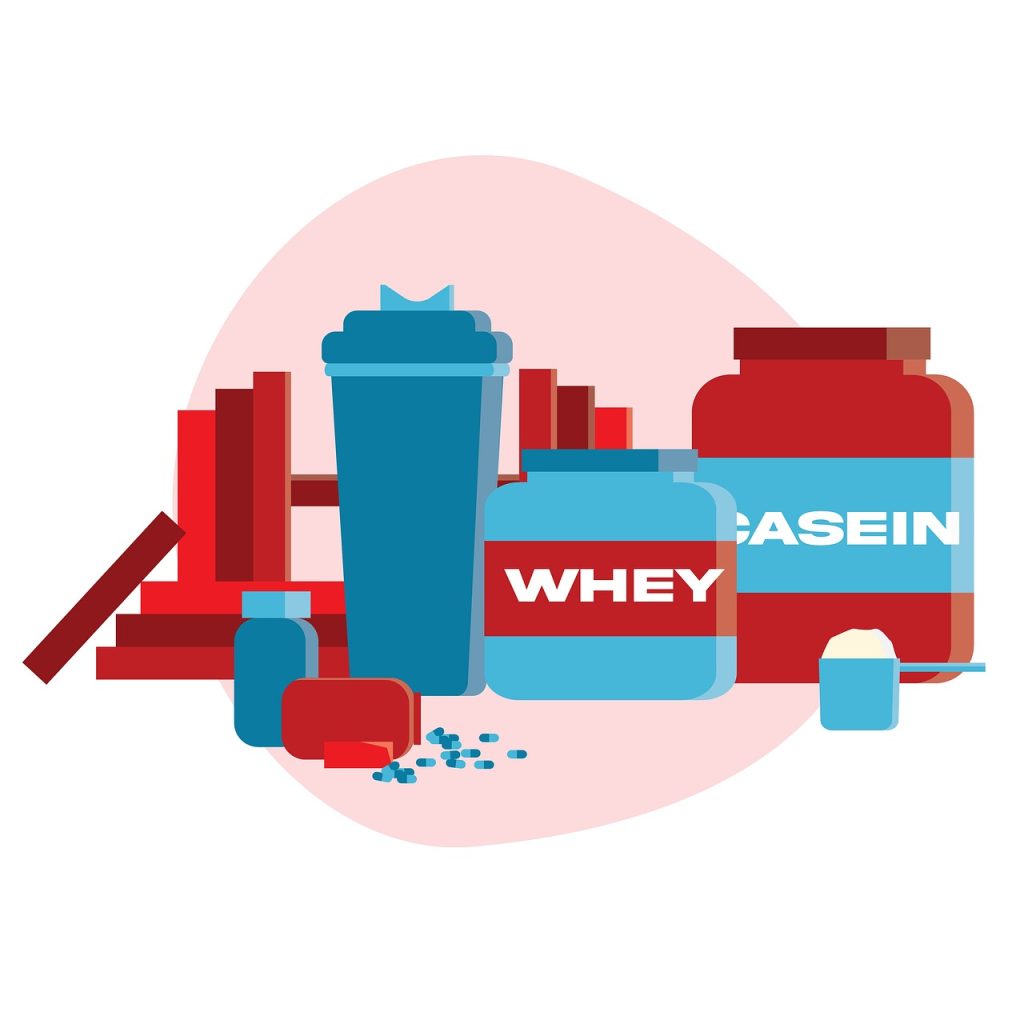When you want to buy a protein shake to ensure extra protein intake, it can be quite a tough search. After all, the current market of protein shakes is flooded with a huge range of manufacturers all claiming to be the best. And in addition, you have the choice between Whey Concentrate and Whey Isolate. We will explain the differences between these two below.
What is whey?
Protein shakes, along with creatine, are the best-selling dietary supplements in the Netherlands, if not in the world. Protein shakes can help promote muscle recovery, facilitating better muscle growth. But what exactly is whey protein? In our article on what whey protein is, we explain in detail what whey is and how it is produced, but below is a brief explanation.
Whey, also known as Whey in Dutch, is a by-product that occurs during cheese production. Milk is the main ingredient in cheese production. When the milk is added with rennet and starter culture, a gel-like substance called curd forms. This curd is pressed through a filter, resulting in cheese. The substance left behind in the filter is dried, and that’s the whey protein powder we know.
The powder left behind does not consist of 100% whey protein. It often contains fat, carbohydrates such as lactose, and protein. The protein concentration typically ranges from 20 to 90 percent. This protein concentration determines the classifications of concentrate and whey isolate. Additionally, there is also the hydro isolate. Below, you’ll read about the differences between these three.
Whey Concentrate
This is the most common form of whey. Whey concentrate contains a protein percentage of up to 80 percent. In addition to protein, whey concentrate also contains carbohydrates, primarily lactose, and fat. This gives the whey a slightly richer taste and also mixes well.
Whey Isolate
This is the purest form of whey. Whey Isolate consists of more than 90 percent protein and contains much fewer carbohydrates and fats. Further purification methods are required to obtain whey isolate, often making it more expensive than concentrate. This can be a disadvantage when you, as an athlete, are limited by your budget. Additionally, the taste may not be as good as with whey concentrate, making it a less popular dietary supplement.
Whey Hydroisolate
The whey hydroisolate undergoes further processing by enzymes. This breaks down the amino acid chains, allowing them to be absorbed directly by the intestines. Whey hydroisolate is often recommended for people who are lactose intolerant. The taste of whey hydroisolate is the least pleasant of the three.
Difference between whey concentrate and isolate
As you may have read, whey isolate undergoes additional processing, making it purer in terms of protein content. If you don’t want to consume extra calories but still want as much protein as possible, whey isolate may be a good option for you. The additional processing further separates carbohydrates and fats, leaving more whey behind in a higher concentration. You might not expect it, but whey concentrate has greater health benefits than whey isolate. Due to the higher amount of bioactive peptides, positive effects can occur on the immune system, nervous system, and digestion. Additionally, the price of a concentrate is often much more friendly than an isolate or hydro-isolate.
Which whey should I choose?
It is very personal which of the 3 whey protein shakes is best for you. After all, if you are allergic to lactose or other whey components, then the hydro-isolate may be a good choice. You will have to spend a little more money, but you will experience fewer stomach problems and pimples compared to the regular concentrate and isolate.
If you are on a cutting diet and want to consume as few calories as possible but still want the highest possible protein, then an isolate may be a good choice. However, realize that the taste of an isolate is different from that of a whey concentrate. This is because the ratio of protein to carbohydrates is different.
Conclusion
In several articles on Fitsociety, we have discussed the importance of an adequate intake of protein and amino acids for various purposes. It is therefore often a personal choice whether, based on your goal, budget, or allergy, you want to opt for a concentrate, isolate, or hydro isolate. Often, a concentrate also consists of a part of isolate and casein. If you can’t choose, opt for a mix, which also contains at least 80 percent whey protein, and you’ll be fine. If you want to consume fewer calories, go for the isolate.

